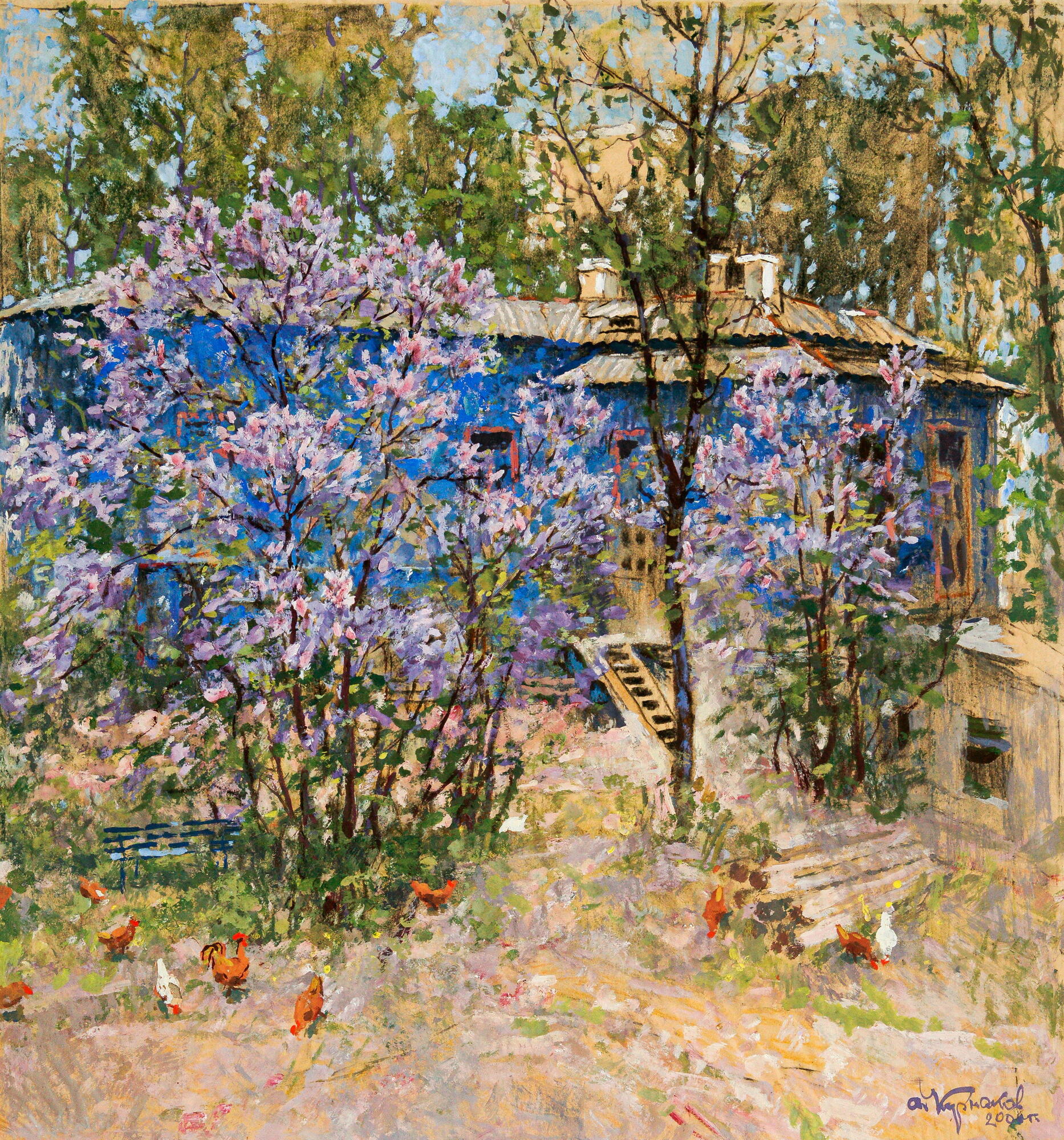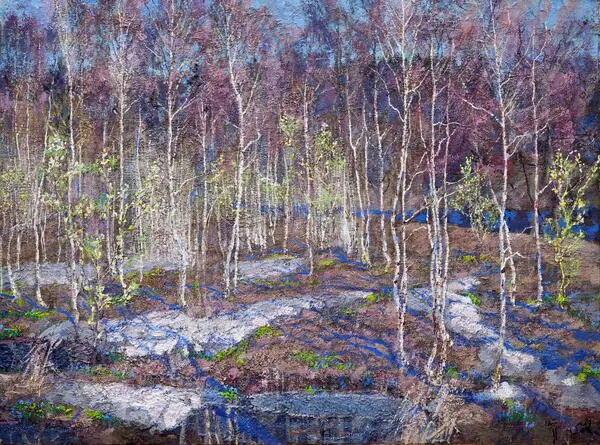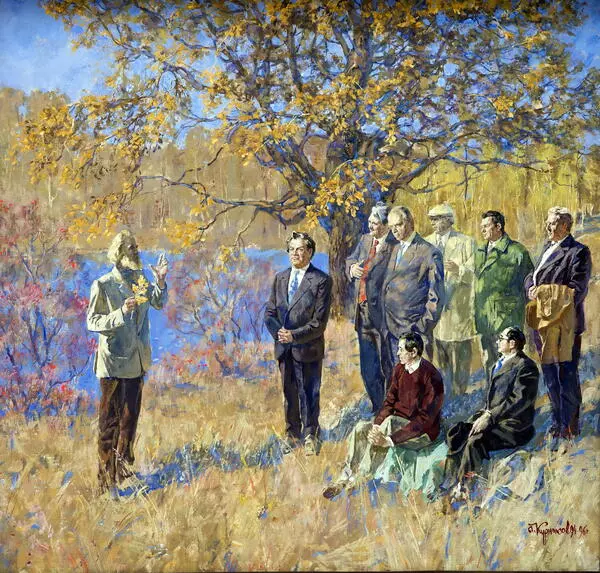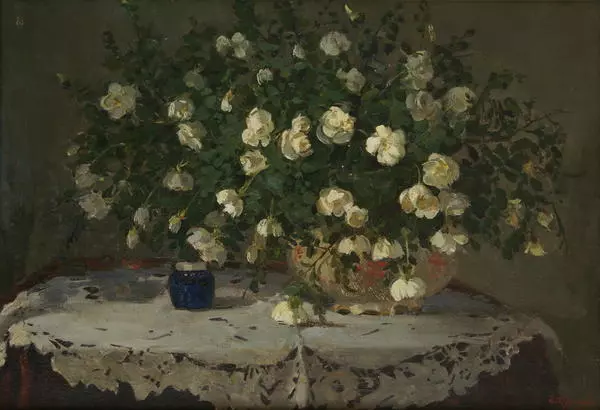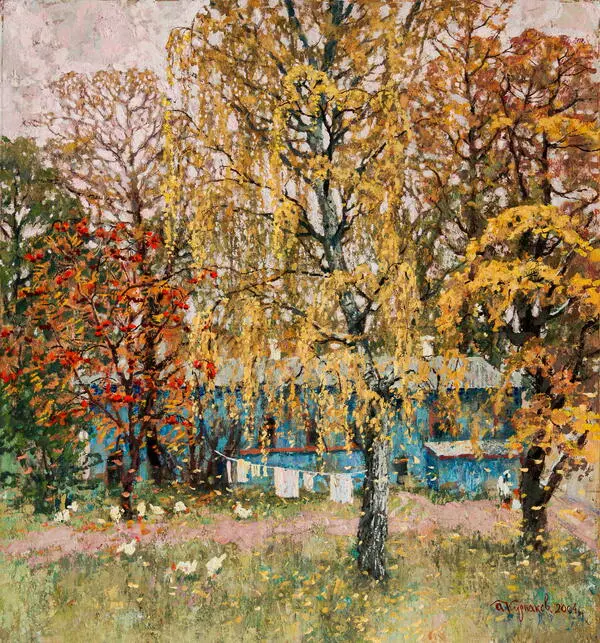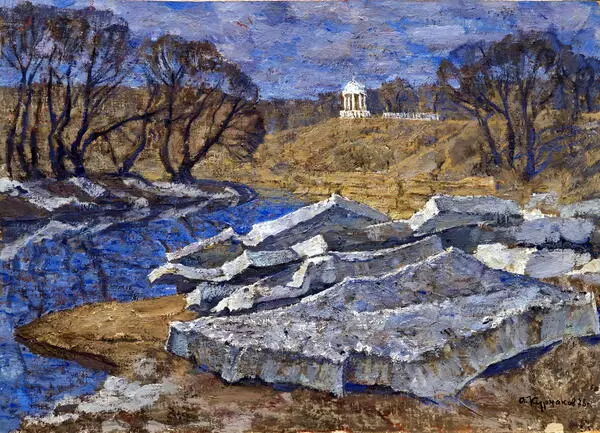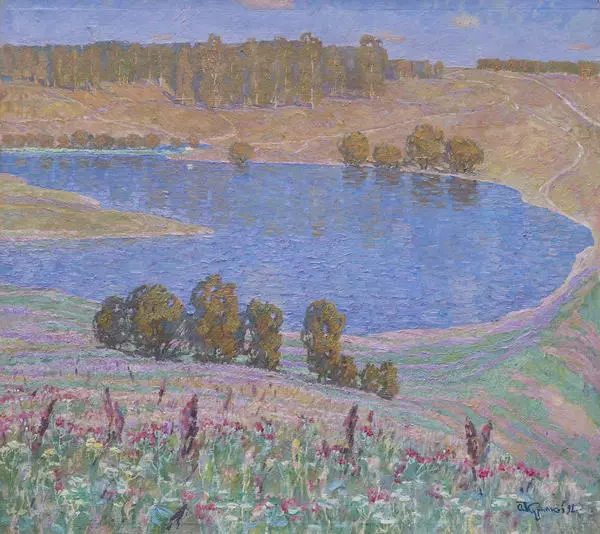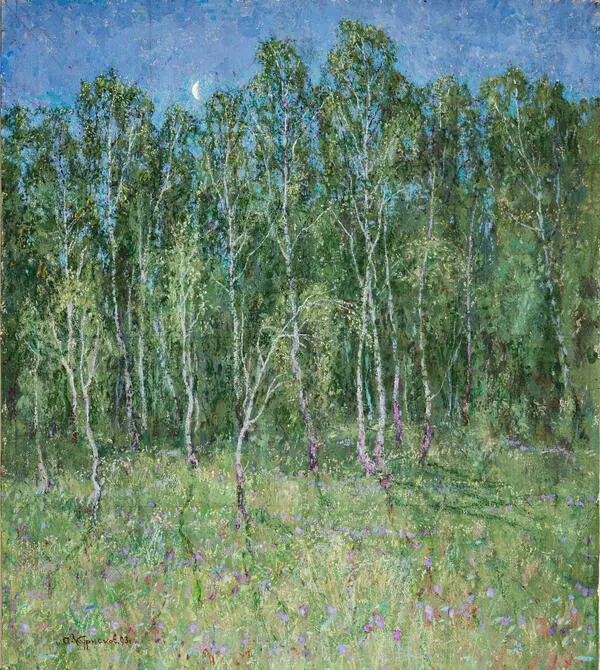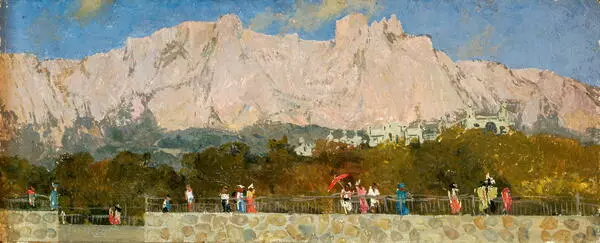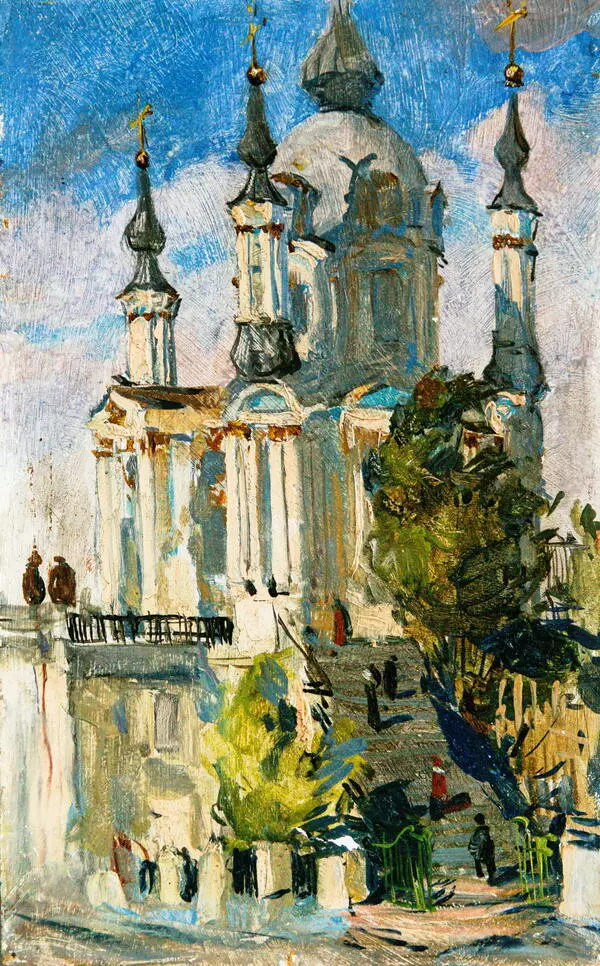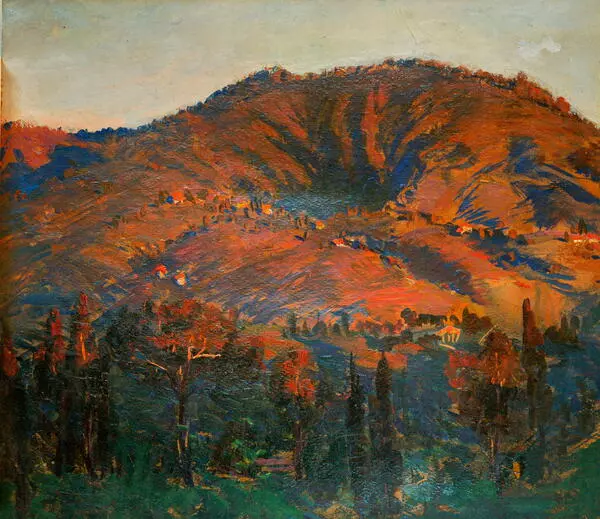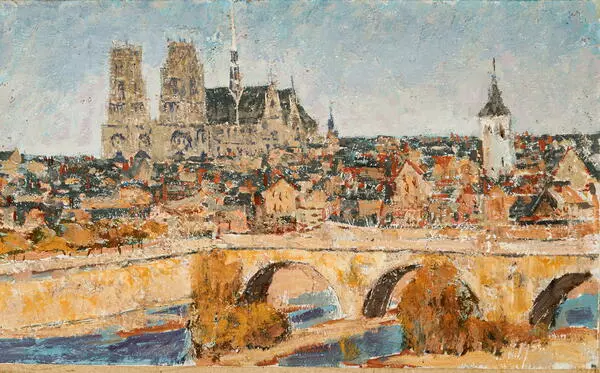In 1983, the Honored Artist of the RSFSR Andrey Ilyich Kurnakov received an old one-story merchant mansion from the Oryol City Executive Committee to use as his creative studio. The painter instantly fell in love with both the house and the yard adjacent to it. The wooden buildings of the late 19th century, albeit rather dilapidated, were still a precious fragment of the old Oryol. In spring, the yard was replete with lilacs. The artist could not pass by such an obvious opportunity for a new landscape.
The elegant lilac comes from Persia. It was brought to Europe in the 16th century. The unfastidious shrub, resistant to changes in weather and temperature, would soon become widespread for its charming lushness, subtle shades, and dizzying fragrance.
The painting “Lilacs in Bloom” depicts the house of Kurnakov’s neighbor and a yard overgrown with grass on a sunny spring day. Chickens pace the property basking in the sunlight and scratching about for food. Firewood, no longer needed given the season, lies forgotten by the barn. Everything is quiet, peaceful, plain, and ordinary. Kurnakov knew how to make even such a simple everyday scene seem aesthetic like nobody else. With his great attention to detail and effective arrangement of color accents, the artist managed to translate mundanity into works of art.
Lilacs occupy the compositional center and reflect the very essence of the painting. The combination of white, pale pink, purple, mauve, and bright green shades brings harmony and joy into the scene. The blue sky in the background, the bright blue wall of the house, and the vivid, fresh, verdant greenery — all that serves as the backdrop for the lush lilac bushes admired by Kurnakov. The blooms are painted in bunches with fine multi-colored strokes, resembling a mosaic. It seems that Mandelstam may have had this painting in mind while writing the following lines:
The elegant lilac comes from Persia. It was brought to Europe in the 16th century. The unfastidious shrub, resistant to changes in weather and temperature, would soon become widespread for its charming lushness, subtle shades, and dizzying fragrance.
The painting “Lilacs in Bloom” depicts the house of Kurnakov’s neighbor and a yard overgrown with grass on a sunny spring day. Chickens pace the property basking in the sunlight and scratching about for food. Firewood, no longer needed given the season, lies forgotten by the barn. Everything is quiet, peaceful, plain, and ordinary. Kurnakov knew how to make even such a simple everyday scene seem aesthetic like nobody else. With his great attention to detail and effective arrangement of color accents, the artist managed to translate mundanity into works of art.
Lilacs occupy the compositional center and reflect the very essence of the painting. The combination of white, pale pink, purple, mauve, and bright green shades brings harmony and joy into the scene. The blue sky in the background, the bright blue wall of the house, and the vivid, fresh, verdant greenery — all that serves as the backdrop for the lush lilac bushes admired by Kurnakov. The blooms are painted in bunches with fine multi-colored strokes, resembling a mosaic. It seems that Mandelstam may have had this painting in mind while writing the following lines:
